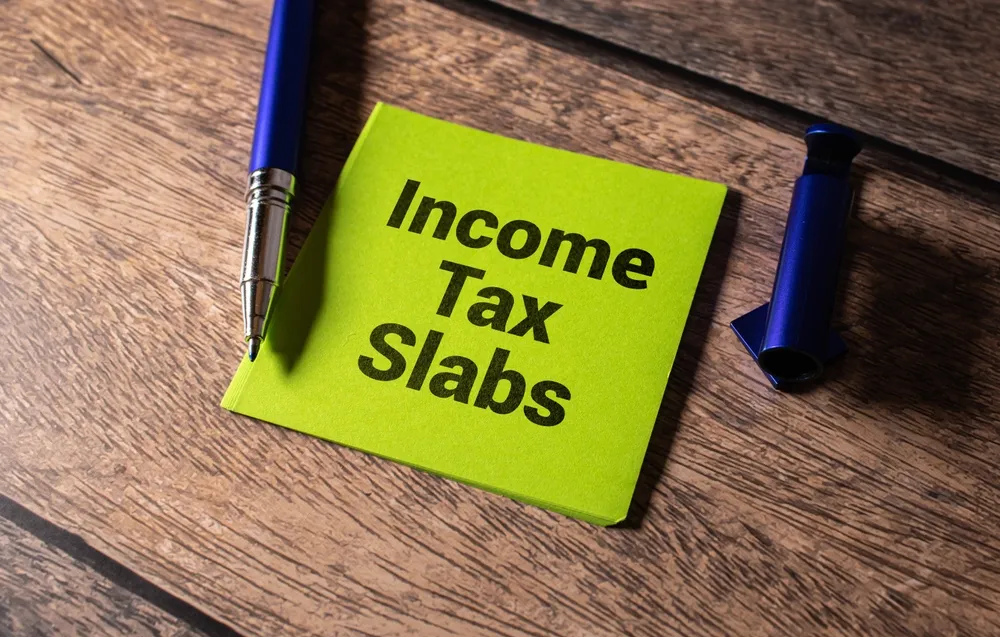Market News
DLF, Sobha, Macrotech: NIFTY REALTY index rallied over 3% on Budget Day; 7 key announcements that will benefit the sector

6 min read | Updated on February 02, 2025, 12:00 IST
SUMMARY
Budget 2025: The NIFTY REALTY Index ended the session at 952.50 levels, up 3.38%, with eight out of the 10 constituents advancing. Among individual names, Phoenix Mills surged 6.59%, while Prestige Estate Projects zoomed 5.77%.

key Budget announcements that would benefit the real estate sector are income tax relief for the middle class. Image: Shutterstock
Reacting to the announcement, direct beneficiaries such as FMCG, auto, consumer discretionary, and consumer durable stocks rallied in the trade. Apart from these, real estate stocks, too, settled with impressive gains.
Most experts hailed the Budget, terming it as overall pro-growth, infrastructure-driven, and investment-oriented. The focus on middle-class relief, urban development, and connectivity is expected to stimulate real estate demand across various segments, making it an overall progressive and impactful budget, they opine.
However, some feel that a notable shortfall was the absence of major announcements for the affordable housing sector.
Vidip Jatia, Managing Director, Supreme Holdings & Hospitality India Limited, said, "The Union Budget 2025 takes a bold step toward boosting consumption-driven growth, making homeownership more attainable than ever. Increased tax incentives, housing subsidies, and enhanced credit access are set to turn dreams into reality for aspiring homeowners."
Further, the government's strong push for infrastructure development—with higher allocations for roads, railways, and urban expansion—will not only enhance connectivity but also fuel the rise of new micro-markets across the country, unlocking fresh economic opportunities.
"This Budget paves the way for a resilient, self-reliant, and growth-oriented India," Jatia added.
According to experts, key Budget announcements that would benefit the real estate sector are income tax relief for the middle class, tax benefits for residential property investors, a ₹1 lakh crore urban challenge fund for new-age cities, SWAMIH Fund allocation of ₹15,000 crore, and a revamped UDAAN scheme.
Other factors are support for Global Capability Centres (GCCs) and ₹1.5 lakh crore fiscal support for MSMEs.
Income Tax Relief for the Middle Class
This is a major consumption boost. This move is expected to strengthen demand for affordable housing as well. Additionally, the new income tax bill will retain nearly 50% of existing provisions while introducing personal tax reforms and rationalising TDS and TCS regimes by streamlining rates and thresholds, says Anuj Puri, Chairman of ANAROCK Group.
In the FY26 Budget, the limit for TDS (tax deduction at source) on interest for senior citizens has been doubled to ₹1 lakh from the present ₹50,000. Also, the Budget has increased the threshold for TDS on rent from ₹2.40 lakh per annum to ₹6 lakh per annum.
Additionally, the threshold for tax collected at source (TCS) on remittances under the RBI's Liberalised Remittance Scheme (LRS) has been increased from ₹7 lakh to ₹10 lakh.
The concept of TDS was introduced to collect tax from the very source of income. It applies to a variety of payments, such as rent, commission, professional fees, salary, interest, etc. Usually, the person receiving income is liable to pay income tax.
Tax Benefits for Residential Property Investors
Investors can now claim nil valuation for two self-occupied properties, instead of just one - a positive move for residential real estate investment. The simplified TDS on rent decreases the compliance burden and enhances liquidity for landlords and will positively impact the rental housing market, especially in metro cities.
Previously, homeowners could claim only one self-occupied property as tax-free; now, they can claim two—thereby removing taxation on notional rental income from a second home.
"This step minimises tax pressures, promotes homeownership, and facilitates real estate investment, especially in second homes and Tier 2 and 3 cities. Middle-class homebuyers, landlords, and investors can now benefit from reduced tax liabilities, better affordability, and fewer compliance hassles. By simplifying financial constraints and tax rules, the Budget has made property ownership and rental housing more accessible. This gives a significant fillip to the real estate sector, specifically to housing demand," Puri says.
₹1 lakh crore Urban Challenge Fund
The establishment of this urban development fund will enhance infrastructure, unlock real estate potential, and transform cities into major growth hubs.
Rishi Anand, MD & CEO of Aadhar Housing Finance Limited, said, "With the introduction of the ₹1 lakh crore Urban Challenge Fund, coupled with the continued success of the Pradhan Mantri Awas Yojana (PMAY-U), the government is reinforcing its commitment towards enhancing urban infrastructure. At Aadhar Housing Finance, we are excited to align with these progressive steps, thereby strengthening our support towards the government's vision of creating Cities as Growth Hubs."
SWAMIH Fund Allocation of ₹15,000 crore
This will facilitate the completion of over 1 lakh stalled residential units, providing much-needed relief to homebuyers, especially in the National Capital Region (NCR), experts note.
SWAMIH stands for Special Window for Affordable and Mid-Income Housing. It was announced on November 6, 2019, by Finance Minister Nirmala Sitharaman. The Union Cabinet cleared a proposal to set up a ‘Special Window’ in the form of AIF to provide priority debt financing for the completion of stalled housing projects.
Sharing his views on the Budget proposals, Tribhuwan Adhikari, MD & CEO of LIC Housing Finance, said, "Initiatives such as the expansion of the SWAMIH Fund are favorable factors. Additionally, the National Geospatial Mission and improved land record modernisation will further streamline real estate transactions and enhance transparency. Overall, the budget reflects the government’s commitment to a well-rounded economic strategy supporting sentiments across sectors."
₹1.5 lakh crore fiscal support for MSMEs
The allocation of ₹1.5 lakh crore to MSMEs is expected to spur capacity expansion, creating a ripple effect that will positively impact industrial real estate.
Revamped UDAAN Scheme
The restructured scheme aims to connect 120 new destinations and serve over four crore passengers in the next decade. Greenfield airports in Bihar and other regions will be developed to support this expansion. This enhanced connectivity is expected to boost real estate demand in Tier-II and Tier-III cities.
PM Gati Shakti Data Access for Private Sector & Tourism & Warehousing Infrastructure Boost
The government will open PM Gati Shakti data to private players, while 50 top tourist destinations will be developed in collaboration with state governments.
Additionally, hotels will be included in the harmonised scheme for tourism infrastructure, leading to enhanced real estate opportunities in major tourist hubs. This will also benefit the warehousing sector across the country, note experts.
Related News
About The Author
Next Story


